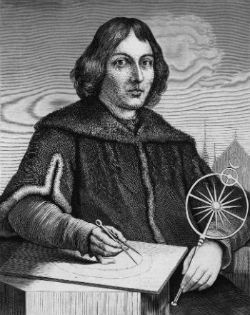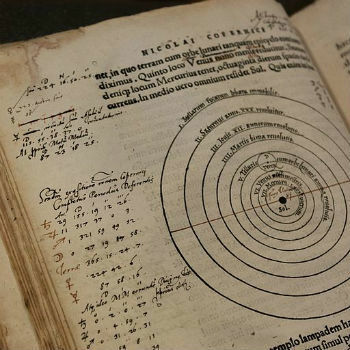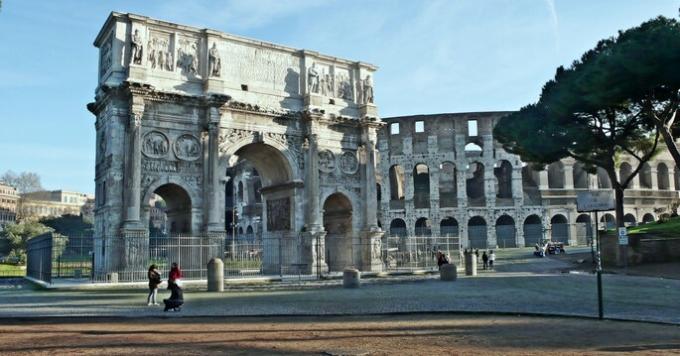Nicolaus Copernicus, one of the fathers of modern astronomy, was born in Tourum, Poland, on February 19, 1473. His given name was MIkolaj Kopernik.
Copernicus was a monk, mathematician and astronomer. He is the author of the Heliocentric Theory, according to which the Sun is the center of the solar system.
Until then, the Catholic Church – which controlled the religious, political and economic power in the Middle Ages – adopted the Geocentric Theory, in which the Earth was the center of the universe.
This theory was based on the studies of Aristotle and was developed by Claudius Ptolemy, a second-century astronomer and geographer. Hence, it was also called the Ptolemaic Theory.
Biography

Nicolas Copernicus was orphaned at the age of 10 and was raised by his maternal uncle Lucas Watzelrode, who later became Bishop of Ermland.
In 1491 he entered the University of Krakow, where he studied liberal arts and also Mathematics and Astronomy.
He later studied Greek at the University of Bologna. He also attended the University of Padua where he graduated in Medicine and from the University of Ferrara received the title of Doctor of Canon Law.
He returned to Poland in 1501, where he assumed the functions of Canon of Franenburg and where he also practiced medicine.
Working in parallel as an astronomer, he built a precarious observatory to study the movement of celestial bodies.
The results, however, were only presented to friends who received a cosmological model in 1507, but nothing was official.
In 1515 he began writing his main work “From Revolutionibus Orbium Coelestium”, which was only published in the year of his death.
Heliocentric Theory
In his work, Copernicus states that the Earth is not fixed at the center of the universe, but rotating in a circular orbit around the Sun, just like the other planets.
Despite the error regarding the circular orbit of the planets, its heliocentric theory paved the way for the quest for a greater understanding of the universe.
He deduced, after successive mathematical calculations, that the Earth is the celestial body that performs a complete movement around its own axis, explaining the reason for day and night.
Copernicus also ordered the planets by their distance from the Sun and concluded that the smaller the orbit, the greater the orbital speed.
To learn more, read also Geocentrism.

Main Work
Nicolaus Copernicus' theories were only presented in 1530 in a manuscript called “Revolutionibus Orbium Coelestium – Of the Revolution of the Celestial Bodies”.
Publication was only allowed in 1540, under the responsibility of George Joaquim Rhäticus, disciple of Copernicus.
It was only in 1543 that Rhäticus obtained permission from Copernicus to print and circulate in Nuremberg the complete work of his master. Presented in a scientific way and no longer as a hypothesis.
The preface to the publication was authored by Pope Paul III, but was replaced by another, signed by Andreas Osiander. In it, he pointed to Copernicus' theory as a hypothesis.
Divided into six volumes, the work pointed out that all planets, including the Earth, revolved around their own axis and around the Sun.
Historians do not agree on whether Copernicus managed to see the first volume of the work “On the Revolutions of the Celestial Bodies”. The printing took place in the year of his death, May 24, 1543.
The Holy Inquisition
Copernicus' studies took 30 years and his prudence was also justified by the Church's constant condemnation of those who questioned its official doctrines.
In general, convictions resulted in death on charges of heresy by the Inquisition.
Questioning the theory that placed the Earth at the center of the Universe was a direct challenge to religious thought. This removed, in addition to the planet, man himself from the center of the universe.
Among the main dogmas of the Catholic Church is that man is made in the image and likeness of God, being, therefore, at the center of the universe.
Only 20 years after the release of Copernicus' first comments did the Dominican friar Giordano Bruno revealed his studies of the infinite universe. He was sentenced to death by the Inquisition.
the scholar Galileo Galilei – who lived between 1564 and 1642 – managed to prove the Heliocentric Theory of Nicolaus Copernicus. Galileo, however, denied his studies because he was threatened with excommunication and death by the Holy Inquisition.
Later, Isaac Newton (1642 to 1727) explained the physical basis of the gravitation of planets around the Sun.
Still, the Vatican kept the idea of geocentrism until 1835. Pope Gregory XVI ordered the removal of the work of the Revolutions of the Celestial Bodies from the list of books censored by the Holy See and admitted the error of its predecessors.
Sentences
- "Knowing that we know what we know, and knowing that we don't know what we don't know, this is true wisdom".
- "I'm not too caught up in my own opinions to ignore what others might think of them."
- "Science is the child of truth and not authority"
We have more texts on the subject for you:
- Aristotle
- Geocentrism and Heliocentrism



